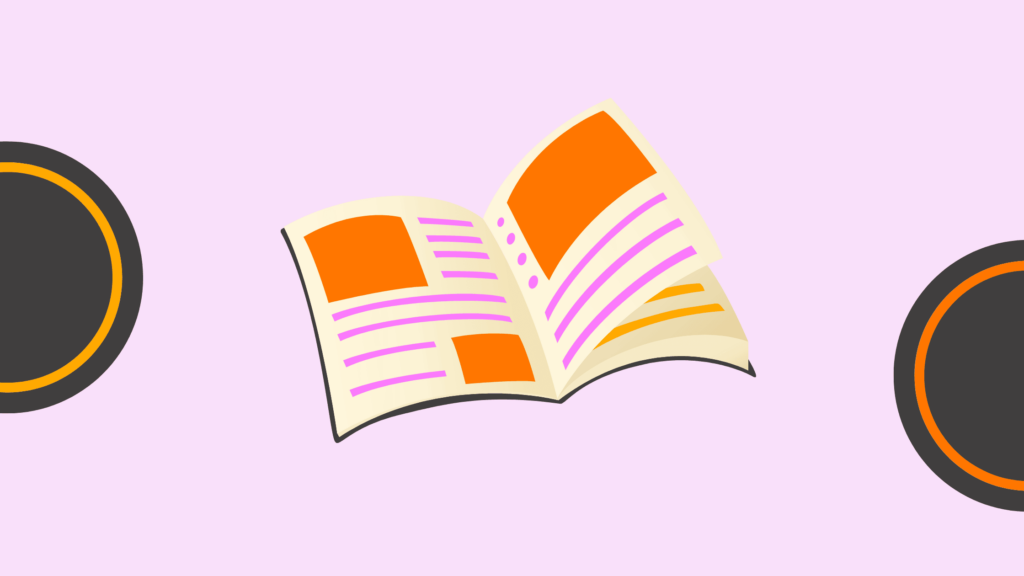Digital Magazines. What Are the Characteristics
The anatomy of a great Digital Magazine
When mentioning digital magazines, a lot of people think of flippable PDFs in the form of a Flipbook. This notion is a bit outdated, the idea being that you would transfer content specifically for print one-to-one to a digital version. We no longer believe in this method. The time has come to embrace the options that browser publishing has to offer.
From a technical perspective, Foleons’ developers use HTML5, CSS3, and Javascript, just like website developers. However, online magazines are different from websites. Check out these seven unique characteristics of digital magazines:
1. Great Digital Magazines have a head and tail

One of the most important differences between websites and digital magazines is the head and tail of an online magazine. Obviously, you can jump in halfway through the magazine, but there will always be a front and back cover. Most websites have a home page but there’s no ‘end page’.
2. Add linear navigation
Yes, websites also have a navigation structure, often multiple structures. But the customer’s journey is not set in stone. Main menus often have sub-menus, and users often jump around aimlessly. Online magazines only have a linear navigation. A direct and clear chronology will guide your readers through your articles.
3. Offer a full-screen experience
Beautiful pictures and cool videos deserve to be viewed full-screen. Enabling a full-screen mode will provide users with a more immersive, cinematic experience. Websites are often full of distracting elements like advertisements, display banners, or other subjects. Readers are far more likely to stick around longer on the pages of an online magazine, and they also tend to be more focused.
4. Add relevant content to your Digital Magazines
The right combination of well-chosen topics, exciting headlines, and visuals make a magazine worthy of reading. Our page formula will help you to elicit insights from your readers: what content do they need and how can you help them? You’ll end up offering more relevant information to a more specific audience.
5. Tell visual stories with your Online Magazines

Some websites are rich in visuals, although they are generally text-heavy. The ratio between text and visuals is different in online magazines, visual storytelling involves bringing text, visuals, video, and audio together in one medium. You can vary and add long reads, but you should always ensure plenty of appealing visual aspects.
6. Publication frequency
A website is available 24/7 and can be updated anytime. The same applies to online magazines, although new issues are usually published periodically (monthly or quarterly, for example). Readers generally have access to older issues as well. Sometimes a magazine will be a one-off edition.
7. Push medium
The referral link to a digital magazine is very often shared via email. You will receive this email because you’re a customer or because you subscribed to a newsletter. In other words: it has been delivered to you (push medium). Websites attract visitors (pull medium). You visit a website because you are looking for it, or you end up there by accident after clicking on an ad or a link in a tweet.
Extra benefits
Magazines that you create in Foleon are browser-based and fully responsive. You open the publication in a browser (Chrome, IE, Firefox, Safari) and it doesn’t matter whether it’s on your smartphone, tablet, desktop, or smart TV. Nowadays many people surf the internet on a mobile device. This is why it is so very important to optimize content for every device.
Do you have a story to tell?
Whether it’s an annual report, staff magazine, event report or corporate brochure, it’s all about telling a story. Naturally, you’ll want to share your story in a visually appealing way.
FAQ
What distinguishes digital magazines from traditional print magazines?
Digital magazines are accessed electronically via computers, tablets, or smartphones, offering interactive content, hyperlinks, and multimedia integration, unlike print magazines which are physically printed.
How do digital magazines incorporate multimedia elements?
Digital magazines often include multimedia elements such as video, audio, animations, and interactive graphics, enhancing the reader’s engagement and experience.
What are the distribution methods for digital magazines?
They are typically distributed through websites, email subscriptions, digital newsstands, or dedicated apps, making them easily accessible from anywhere at any time.
How do digital magazines provide interactive content?
Interactive content in digital magazines can include clickable links, interactive quizzes, and embedded social media feeds, providing a more engaging experience than static print content.
What is the role of SEO in digital magazines?
SEO is crucial for digital magazines to increase their visibility and discoverability in search engines, driving more traffic to their content.
Can digital magazines be personalized for readers?
Yes, they can offer personalized content based on readers’ interests, browsing history, and engagement patterns, using data analytics to tailor the reading experience.
How does social media integration benefit digital magazines?
Social media integration allows readers to easily share content on their social networks, increases reader engagement, and drives traffic back to the magazine’s platform.
What are the environmental benefits of digital magazines?
Digital magazines reduce paper consumption and waste, offering an eco-friendlier alternative to traditional print publications.
How do digital magazines adapt to different devices and screens?
They are designed with responsive layouts to ensure readability and functionality across various devices, including smartphones, tablets, and desktop computers.
What analytics and metrics are important for digital magazines?
Key metrics for digital magazines include page views, time spent per article, click-through rates, and audience demographics, helping publishers understand reader preferences and behaviors.
Other interesting reads
Influencer Marketing Strategies for Success in 2024 [...]
SEO Demystified: Understanding the Core Principles Behind Effective Optimization [...]
Common Multi-Channel Listing Management Challenges and How to Overcome Them [...]
Creating a Seamless Collaborative Experience: The Role of Digital Sales Rooms [...]
How to Avoid Common Pitfalls in Employee Time Tracking [...]
How YouTube Influencers Can Boost Your Brand and Drive Sales [...]
Author bio
 Ritesh is a digital marketing manager with years of experience in driving growth. He’s currently the director of inbound marketing at Foleon. You can find more about him on his LinkedIn profile.
Ritesh is a digital marketing manager with years of experience in driving growth. He’s currently the director of inbound marketing at Foleon. You can find more about him on his LinkedIn profile.
Master the Art of Video Marketing
AI-Powered Tools to Ideate, Optimize, and Amplify!
- Spark Creativity: Unleash the most effective video ideas, scripts, and engaging hooks with our AI Generators.
- Optimize Instantly: Elevate your YouTube presence by optimizing video Titles, Descriptions, and Tags in seconds.
- Amplify Your Reach: Effortlessly craft social media, email, and ad copy to maximize your video’s impact.